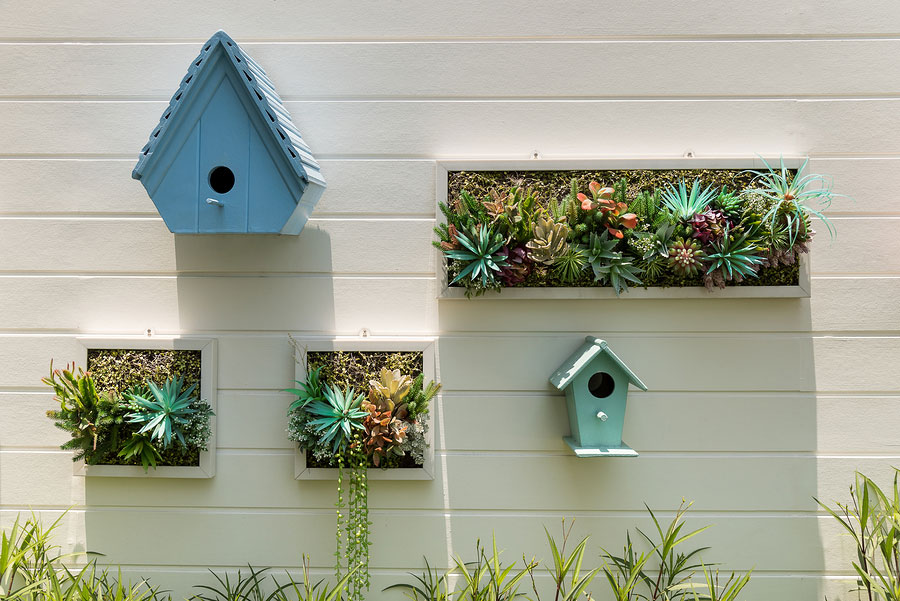Got limited room for a garden? Don’t let the idyllic climate of the low-country go to waste, even if space is tight. If you lack footage horizontally, consider planting vertically; a vertical garden is a solution for anyone with more of a green-thumb than green-space.
Irrigation
Irrigation is of the utmost importance when it comes to a vertical garden. Roots can become crowded and dry-out fast; drip irrigation ensures they don’t wither and die. Many of the most popular vertical systems have built-in irrigation systems, which make it easy to be successful at growing hardy, lush gardens.
Pockets
Parallel-positioned boards along a wall create pockets,which are perfect for vertical gardening. Make sure to use pressure-treated boards; you can also use low-cost plastic planters secured to the boards in a fashion that the upper-rows drain into the lower-rows of plants. Once your plants are thriving, you can expect the boards, pockets, and planters to be covered with foliage.
Gutters
Gutter systems are comprised of troughs, and these segments make excellent, lengthy plant-pots. Drill holes on the bottom of the trough for drainage, and secure horizontally to a wall or fence, but remember to plug or cap the ends. Typically, it works to keep rows around one-foot apart, but naturally it depends on what you choose to grow. By planting the rows closer-together, you will likely achieve your green-wall. You will probably find it easiest to water these planters by-hand.
Crates
The great thing about using recycled milk crates for your vertical garden is all the space that you are afforded for the roots; make sure to line your crates first with a layer of weed fabric before adding soil. This ensures drainage and air circulation which contribute to hardy plants and a lush garden. Plant in the sides of the crate by cutting through the weed-fabric, and stack the crates to form your vertical garden.
Kits
If you want to keep things simple or if you don’t have time to create the foundation for your vertical garden, you may want to go with a kit. These kits are found widely at garden supply stores and sites and provide all that you will need to get started.
When implementing vertical gardens of any kind, make sure that the surface you are using won’t be compromised by prolonged exposure to moisture. Be cautious using the exterior walls of your home for your first vertical garden; it might be safer to experiment first with a fence or out-building.
Ask the experts at TerraBella Garden Center about implementing vertical gardens in your landscape. Even if you lack green-space, you can still enjoy the fruits of a lush garden in the Lowcountry.


